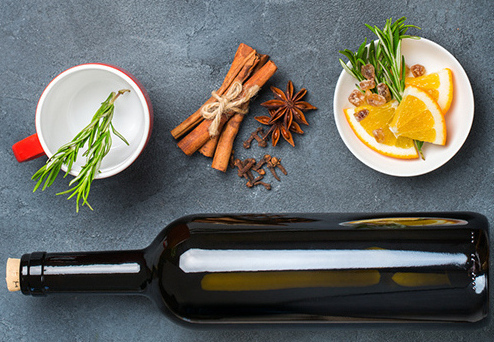Blog
What Are You Smelling in your Glass of Al Lago Wine?
08/23/2020

One of the things we hear quite often from guests visiting the Al Lago Wines’ tasting room is that they can never experience the smells listed on the tasting notes of a wine. They will timidly ask for confirmation that they are smelling cherry, or chocolate, or some other fruity scent. And occasionally we will be asked whether they can be trained to smell those things in wine. The best response I can give is in the form of a personal anecdote. When I first began drinking wine, I would really struggle to smell anything notable in my glass, let alone the ones listed by tasting notes. To me everything smelled… like wine. It went on like this for a couple years until one night at a party when a friend poured me a random glass of red wine. I was in the middle of a discussion, not really paying attention to what I was drinking, but when I brought the glass up to my nose it pulled me right out of my conversation. It smelled exactly like night-blooming jasmine (a smell I strongly associated with my childhood)! There are a couple of things I want to highlight with this story: 1) the first time I was able to smell something other than wine was when I was relaxed – rather than straining to smell something recognizable, and 2) that the smell I was able to pick up was something very familiar.
There are ways to maximize your potential for locating and smelling something recognizable:
- Familiarize yourself with as many aromatics and scents as possible, and
- Begin with the scents closest to home.
First, select one type of scent (at most two) that you would like to focus on from the categories below. Pull together 2-6 fragrant items already located in your home or that you can easily obtain in that category from the examples shown, which include:
- Herbs: Sage, thyme, peppercorns, basil, mint, oregano, ground pepper,
- Spices: Star anise, cinnamon, cloves, licorice, vanilla,
- Floral: roses, lilies, orange blossoms, carnations, freesias, birds of paradise, hibiscus,
- Other common items: leather, tar, bacon fat (treat yourself to eating the bacon along the way), fresh earth, coffee, pencil shavings, or
- Fruit/produce: Strawberries, citrus, apples, raspberry, blackberries, blueberries, bell peppers.
Put a little amount of each into a small cup or dish and really familiarize yourself with and memorize them. For many people, their ability to recall and recognize a smell is enhanced if they think about how they "feel" as they inhale them. For example, there are some things that you can easily smell and "feel" – like mint (which clears your sinuses), or freshly ground black pepper (which can feel like it is slightly burning). While other, herbal scents you will find in your home can be a little more challenging -- think of sage, oregano, peppercorns, thyme, or basil – because there will be differences between the fresh and dried versions of these herbs As a result, they will "feel" different as you inhale their scents. Do your best to keep your eyes closed as you take them in so that you are fully focused on learning those smells and memorizing them. Once you can identify them all blindfolded, you have made real progress! Now you are ready to take the next step: try to tease apart the spices and herbs in your meals or in a cup of tea. Being able to identify a smell in wine is just as important as being able to smell it.
Now you’re ready for prime time. For your second exercise, pour a glass of one of the Al Lago wines from your collection (at most three glasses!), relax a bit and just enjoy the first couple of sips, and then move your wine glass to allow the wine to gently coat the side of your glass; avoid the temptation to swirl your wine aggressively. It is time to put your hard work to the test. Don’t be shy. Place your nose fully in the glass and start to smell a few of the now-familiar scents. Don't be afraid to use non-conventional descriptions – you’ll sound like a pro doing that! Printed tasting notes are usually quite refined and full of "proper" descriptors, but when you first start out, just look for two to five aromas that you can either recognize or loosely describe. Over time, your descriptions will go from something like “new shoes, potpourri, Lady Grey tea, menthol cigarettes” to “clean leather, dried rose petals, bergamot, and fresh tobacco”, but have fun along the way and enjoy the journey! When this pandemic is over, let’s plan to meet in the tasting room and have fun describing the aromatics of the Al Lago wines we each noted!
Post By:
Samantha Mogull
For Further Information On Al Lago Wines...
For invitations to our future events, for information on our corporate gift programs, or to subscribe to our free, monthly, educational newsletter on wine-making, wine tasting, and the wine industry generally, please complete and submit this form...
We will contact you shortly to provide you with additional information based on your preferences to help you learn more about Al Lago Wines’ events and programs. Thank you for your interest in Al Lago Wines!

